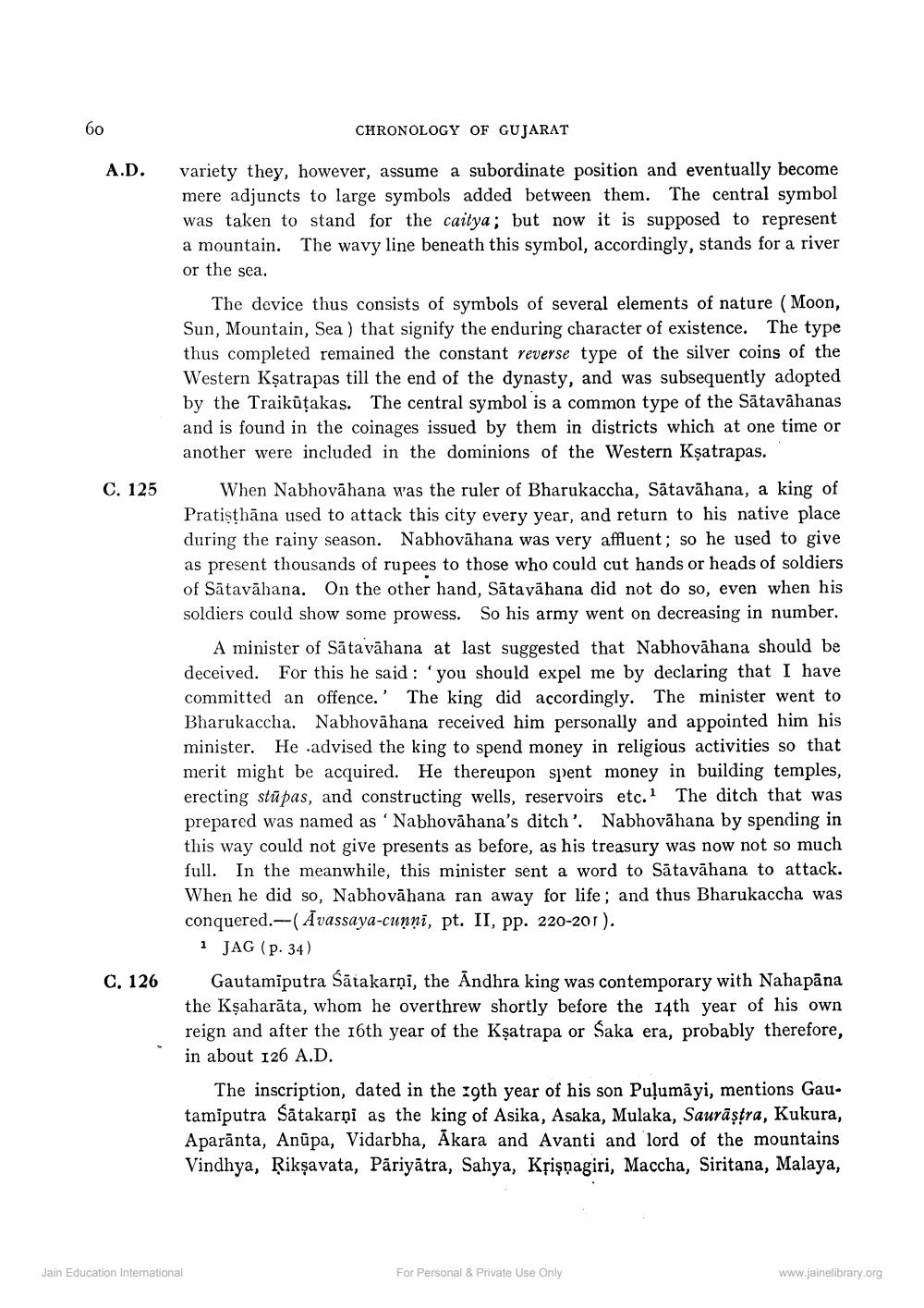________________
60
CHRONOLOGY OF GUJARAT
A.D.
C. 125
variety they, however, assume a subordinate position and eventually become mere adjuncts to large symbols added between them. The central symbol was taken to stand for the caitya; but now it is supposed to represent a mountain. The wavy line beneath this symbol, accordingly, stands for a river or the sea.
The device thus consists of symbols of several elements of nature (Moon, Sun, Mountain, Sea) that signify the enduring character of existence. The type thus completed remained the constant reverse type of the silver coins of the Western Kșatrapas till the end of the dynasty, and was subsequently adopted by the Traikūţakas. The central symbol is a common type of the Sātavāhanas and is found in the coinages issued by them in districts which at one time or another were included in the dominions of the Western Kșatrapas."
When Nabhovāhana was the ruler of Bharukaccha, Sātavāhana, a king of Pratisthāna used to attack this city every year, and return to his native place during the rainy season. Nabhovāhana was very affluent; so he used to give as present thousands of rupees to those who could cut hands or heads of soldiers of Sātavāhana. On the other hand, Sātavāhana did not do so, even when his soldiers could show some prowess. So his army went on decreasing in number.
A minister of Sātavāhana at last suggested that Nabhovāhana should be deceived. For this he said : you should expel me by declaring that I have committed an offence.' The king did accordingly. The minister went to Bharukaccha. Nabhovāhana received him personally and appointed him his minister. He advised the king to spend money in religious activities so that merit might be acquired. He thereupon spent money in building temples, erecting stūpas, and constructing wells, reservoirs etc. The ditch that was prepared was named as 'Nabhovahana's ditch'. Nabhovāhana by spending in this way could not give presents as before, as his treasury was now not so much full. In the meanwhile, this minister sent a word to Sātavāhana to attack. When he did so, Nabhovāhana ran away for life, and thus Bharukaccha was conquered.--( Āvassaya-cunni, pt. II, pp. 220-201). 1 JAG (p. 34)
Gautamiputra Śātakarņi, the Andhra king was contemporary with Nahapāna the Kșaharāta, whom he overthrew shortly before the 14th year of his own reign and after the 16th year of the Kșatrapa or Saka era, probably therefore, in about 126 A.D.
The inscription, dated in the 29th year of his son Puļumāyi, mentions Gautamiputra Satakarņi as the king of Asika, Asaka, Mulaka, Saurāṣtra, Kukura, Aparānta, Anūpa, Vidarbha, Akara and Avanti and lord of the mountains Vindhya, Riksavata, Pāriyātra, Sahya, Krişnagiri, Maccha, Siritana, Malaya,
C, 126
Jain Education Intemational
For Personal & Private Use Only
www.jainelibrary.org




